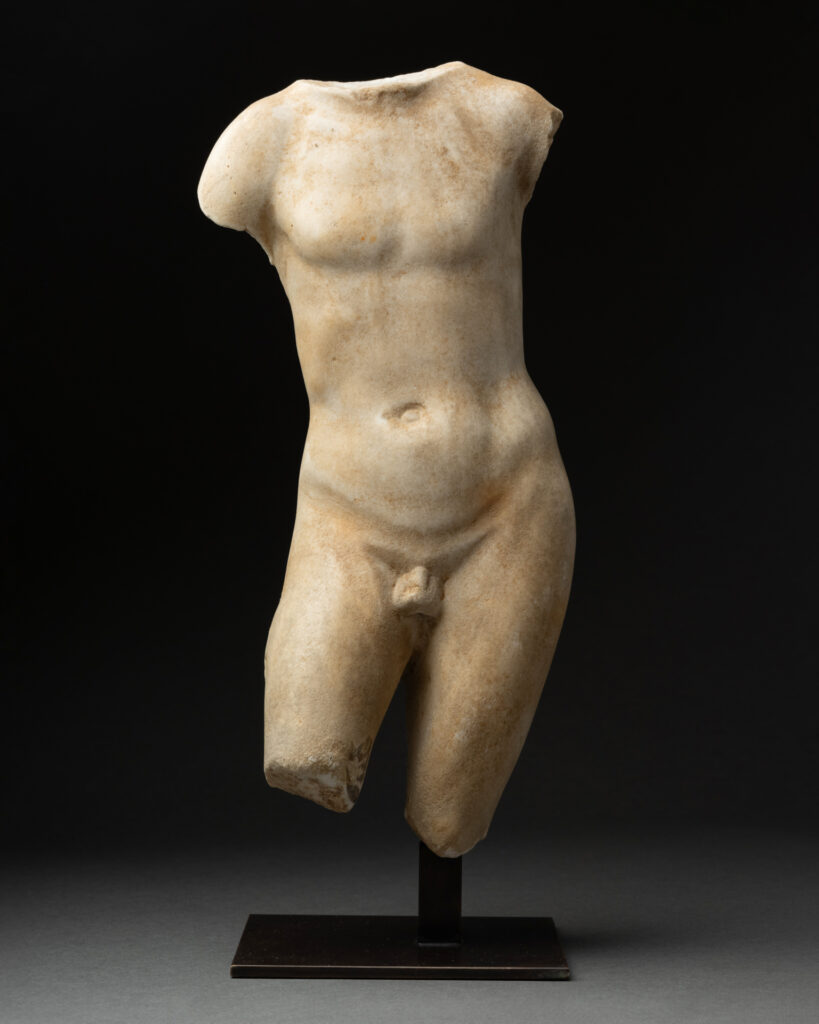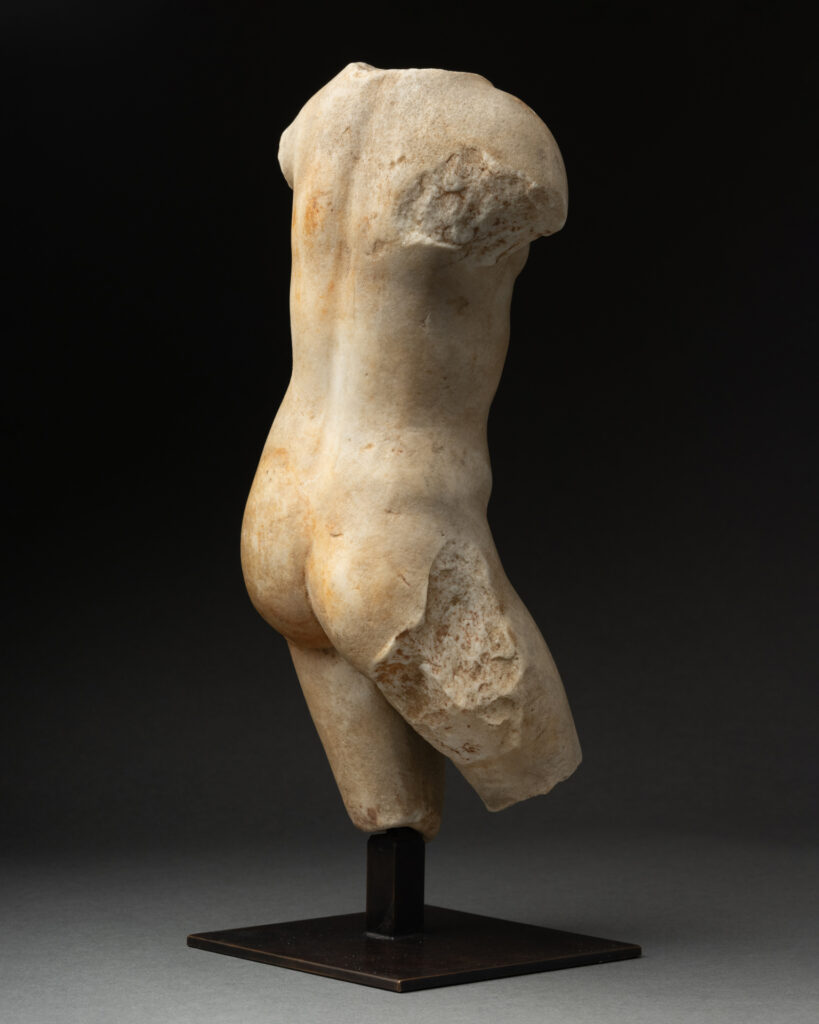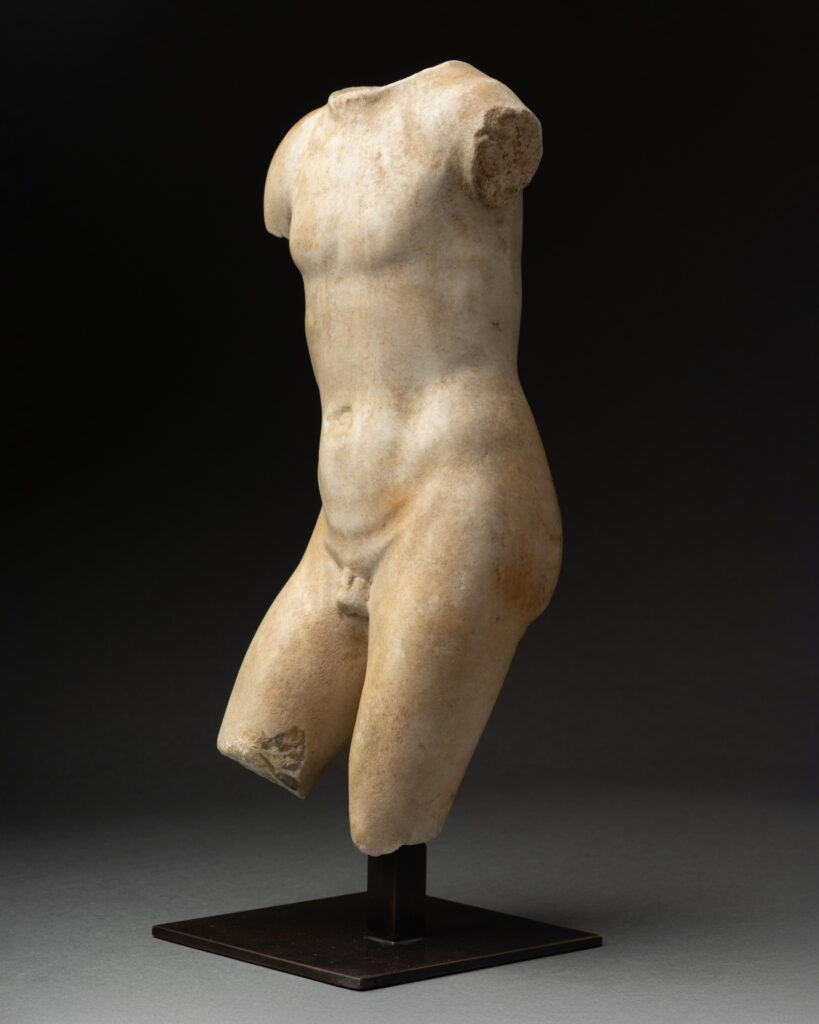This magnificent marble torso, of modest dimensions, dates from the Roman period, between the 1st and 2nd centuries A.D. It represents a naked, headless young man, amputated of his arms and legs at mid-thigh.
Despite its fragmentary state, the sculpture retains a strong presence, thanks to the quality of its execution and mastery of anatomical rendering. The clean break at the right hip suggests that the figure was originally resting on a trunk or stump, evoking a representation of Narcissus or an ephebe, the symbolic figure of ideal male youth in Greco-Roman culture.
The torso may evoke Narcissus, whose perfect body embodies eternal youth, or an ephebe, a young adolescent man in the making, the image of a nascent, idealized virility. This torso reflects these ideals, with its emphasis on proportion and naturalistic representation of the human form, characteristic of Roman sculptural art derived from classical Greek traditions.
The Roman period was able to draw inspiration from Antiquity thanks to the reproduction of numerous sculptures, including ephebes, as Roman patrons admired and imitated Greek art. This type of sculpture was probably intended to adorn villas or public spaces, fulfilling both decorative and symbolic functions.
The treatment of the marble and the subtlety of the muscular lines offer a harmonious, balanced vision of the male body. The contrapposto, characteristic of ancient statuary, discreetly enlivens the figure: the inclination of the body and the slightly bent right leg seem to lighten the posture, reinforcing the impression of naturalness and suppleness. This interplay gives the sculpture a silent yet imposing presence, as if set in marble. Thus, through the mastery of marble, the balance of lines and the restrained sensuality of movement, he expresses a timeless vision of youth and masculine beauty, which has become the ideal of Greco-Roman art.


